Exploring Italy: History and Culture Through the Ages
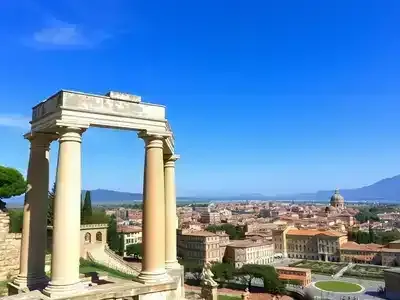
Italy’s Rich Historical and Cultural Journey
Italy is a land rich in history and culture, with stories and traditions that stretch back thousands of years.
From ancient civilizations to modern-day influences, Italy’s past is woven into its art, food, and everyday life.
This journey through Italy’s history and culture reveals how each era has shaped the nation we know today, showcasing its diverse heritage and vibrant customs.
Key Takeaways
- Italy’s ancient civilizations, like the Romans and Etruscans, laid the groundwork for much of Western culture.
- The Renaissance marked a major turning point in art and thought, with Florence at its heart.
- The unification of Italy in the 19th century brought about significant cultural changes and a sense of national identity.
- Regional diversity is a hallmark of Italian culture, seen in its languages, food, and local traditions.
- Religion plays a central role in Italian life, influencing art, architecture, and community celebrations.
Ancient Civilizations And Their Legacy
Italy, as you probably know, wasn’t built in a day.
It’s got layers of history piled on top of each other, thanks to all the different groups that have called it home over the centuries.
You can’t really understand Italy today without looking back at the ancient civilizations ancient civilizations that shaped it.
The Rise Of The Roman Empire
Okay, so everyone knows about the Romans, right? But it’s easy to forget just how much they influenced everything.
They started out as a small city-state and then, boom, they controlled a massive empire.
Their laws, their language (Latin), their engineering – it all spread across Europe and beyond. You still see Roman ruins everywhere in Italy, from the Colosseum in Rome to aqueducts in the countryside.
It’s pretty wild to think about how long ago all that was.
Etruscan Influence On Italian Culture
Before the Romans got going, there were the Etruscans.
They lived in what’s now Tuscany and parts of Umbria.
They were super skilled artists and metalworkers, and they had a big impact on early Roman culture.
Think about:
- Their alphabet, which the Romans adapted.
- Their religious practices.
- Their architectural styles.
The Etruscans were a mysterious bunch, and we don’t know everything about them, but they definitely left their mark on Italy.
Greek Colonies In Southern Italy
And don’t forget about the Greeks! They started setting up colonies in southern Italy way back when.
They called it Magna Graecia, which means “Great Greece.” These colonies became important centers of trade and culture.
You can still see Greek temples and theaters in places like Sicily and Calabria.
They brought:
- Their architectural styles.
- Their philosophical ideas.
- Their agricultural techniques.
It’s amazing how these different cultures all came together to create the Italy we know today.
The Renaissance: A Cultural Rebirth
Imagine stepping back in time to a period of incredible change and creativity.
That’s the Renaissance! It was a time when people started looking back to the art and ideas of ancient Greece and Rome, but with a fresh perspective.
It wasn’t just about copying the old stuff; it was about building on it and creating something new and amazing.
Think of it as a cultural explosion that changed everything from art and science to the way people thought about the world.
Artistic Innovations And Masterpieces
Get ready to be amazed by the art! The Renaissance was a time of incredible artistic innovation.
Artists started experimenting with new techniques, like perspective, to make their paintings look more realistic.
And the sculptures? They were so lifelike, it’s hard to believe they were made of stone.
Think of Leonardo da Vinci’s Mona Lisa or Michelangelo’s David – these are just a couple of examples of the masterpieces that came out of this period. It was a golden age for art, and we still admire these works today.
The Role Of Florence In The Renaissance
Florence was like the epicenter of the Renaissance.
It was a wealthy city with powerful families, like the Medici, who supported artists and thinkers.
They poured money into art and architecture, turning Florence into a beautiful city that attracted talent from all over Italy.
It was a place where new ideas could flourish, and it became a model for other cities to follow.
You can think of Florence as the place where the Renaissance really took off.
The early Italian Renaissance was a time of great change.
Humanism And Its Impact On Society
Humanism was a big deal during the Renaissance.
It was a way of thinking that focused on human beings and their potential.
Instead of just focusing on religion, people started to value education, art, and science.
This led to a new emphasis on individual achievement and a belief in the power of human reason.
It changed the way people saw themselves and their place in the world.
It was a shift from a God-centered view to a more human-centered one.
Humanism really changed the game. It wasn’t just about art; it was about how people thought about themselves and the world around them. It was a move towards celebrating human potential and achievement, which had a huge impact on everything from education to politics.
Here’s a quick look at some key aspects of Humanism:
- Emphasis on classical learning
- Focus on human potential and achievement
- Promotion of civic virtue and public service
The Unification Of Italy
The 19th century was a time of big change in Europe, and Italy was no exception.
For centuries, the Italian peninsula had been a patchwork of different states, kingdoms, and regions, each with its own ruler and identity.
But a growing sense of nationalism started to sweep through the land, and people began to dream of a united Italy.
It wasn’t an easy road, though.
There were wars, political maneuvering, and a lot of internal disagreements to overcome.
But eventually, through the efforts of some key figures and a whole lot of determination, Italy became the nation we know today.
Key Figures In The Unification Movement
When you think about the unification of Italy, a few names probably come to mind.
Giuseppe Mazzini, for example, was a writer and activist who really pushed the idea of a unified Italian republic.
Then there’s Giuseppe Garibaldi, the military leader who led his Redshirts in a series of campaigns that helped bring different parts of Italy together.
And let’s not forget Camillo Benso, Count of Cavour, the shrewd politician who used diplomacy to get foreign powers on board with the unification project.
These guys were all very different, but they shared a common goal: a united Italy.
Cultural Shifts During The 19th Century
The push for unification wasn’t just about politics and war; it also brought about some pretty big cultural shifts.
As people started to see themselves as part of a larger Italian nation, there was a renewed interest in Italian history, language, and traditions.
Artists and writers began to explore themes of national identity in their work, and there was a growing sense of cultural pride.
It was a time of great change and excitement, as Italians started to imagine what their future as a united nation could look like.
The Role Of Literature In National Identity
Literature played a huge role in shaping Italian national identity during the 19th century.
Writers like Alessandro Manzoni, with his novel The Betrothed, helped to create a shared sense of history and culture among Italians.
These stories reminded people of their common heritage and inspired them to work towards a united future.
It’s amazing how powerful words can be, especially when they’re used to unite a nation.
The unification of Italy was a complex process that involved political maneuvering, military campaigns, and cultural shifts. It was a time of great change and excitement, as Italians started to imagine what their future as a united nation could look like.
Here’s a quick look at some of the key literary figures and their contributions:
- Alessandro Manzoni: The Betrothed (I Promessi Sposi)
- Giacomo Leopardi: Poems and essays exploring Italian identity
- Giovanni Verga: Realistic portrayals of Sicilian life
Regional Diversity In Italian Culture
Italy, shaped like a boot, is more like a collection of small countries stitched together.
You’ll quickly notice that what’s true in one region might be totally different just a few hours away.
It’s this regionalism that makes Italy so interesting, and sometimes, so confusing.
Distinctive Dialects And Languages
Italian is the official language, sure, but try talking to someone from Naples in textbook Italian and you might get a blank stare.
Each region has its own dialect, and some are so different they’re practically separate languages. You might hear Sicilian, Venetian, or even Sardinian, each with its own grammar and vocabulary.
It’s a linguistic playground, but also a challenge for anyone trying to learn the language.
It’s like, you learn Italian, and then you have to learn Italian dialects Italian dialects too!
Culinary Traditions Across Regions
Food is serious business in Italy, and each region takes pride in its own specialties.
Think about it:
- In Tuscany, you’re all about simple, fresh ingredients like olive oil and beans.
- In Emilia-Romagna, it’s all about pasta, especially handmade tortellini and lasagna.
- Down in Sicily, you’ve got a mix of Arab, Norman, and Greek influences, resulting in dishes like arancini and pasta alla Norma.
It’s not just the dishes, but also the ingredients.
What grows well in one area might be impossible to find in another.
It’s a culinary adventure, but be prepared to argue about which region has the best pizza.
Festivals And Local Customs
Every town and village has its own festival, celebrating everything from saints to harvests.
These aren’t just tourist traps; they’re a real part of local life.
You’ll see:
- Historical reenactments, with people dressed in medieval costumes.
- Food festivals, showcasing local products and dishes.
- Religious processions, honoring patron saints.
These festivals are a way for communities to come together and celebrate their unique identity. They’re a reminder that Italy isn’t just one big country, but a collection of small, proud communities.
It’s these local customs that really bring Italy to life.
So, when you travel, don’t just see the big cities.
Get off the beaten path and experience the local festivals for yourself.
The Influence Of Religion On Italian Society
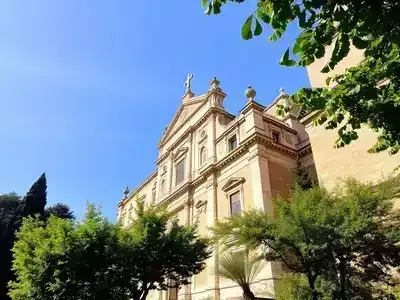
The Catholic Church’s Historical Role
Okay, so, the Catholic Church? Huge deal in Italy. Like, really huge.
It’s not just about Sunday mass; it’s woven into the entire fabric of the country.
For centuries, the Church has been a major player in politics, education, and even the economy. Think about it: cathedrals, monasteries, schools – all run by or heavily influenced by the Church.
It’s shaped laws, social norms, and even how people think about life and death.
You can’t understand Italy without understanding the Church’s role.
It’s been a source of comfort, guidance, and sometimes, controversy, but always a central part of the Italian experience.
The Ancient Rome’s culture was very different.
Art And Architecture In Religious Context
Italian art and architecture? Forget about it without religion.
Seriously, so much of the amazing stuff you see – the paintings, sculptures, buildings – it’s all tied to religious themes.
Think about the Sistine Chapel, or St.Peter’s Basilica.
These aren’t just pretty buildings; they’re expressions of faith, power, and devotion.
Artists like Michelangelo and Raphael were commissioned by the Church to create these masterpieces, and their work reflects the religious beliefs of the time.
It’s like every brushstroke, every carving, tells a story about God, saints, and the afterlife.
It’s impossible to separate Italian art from its religious roots.
Religious Festivals And Their Significance
Religious festivals in Italy? They’re not just holidays; they’re full-blown cultural events.
We’re talking parades, feasts, traditions passed down for generations.
Easter, Christmas, the feasts of patron saints – these are times when communities come together to celebrate their faith and their heritage.
It’s not just about going to church; it’s about the food, the music, the rituals, the sense of belonging.
These festivals are a way of preserving traditions and reinforcing community bonds.
They’re a reminder of the importance of faith in Italian life, and they’re a whole lot of fun, too.
Here are some examples:
- Easter celebrations with elaborate processions.
- Christmas markets and nativity scenes.
- Feasts of patron saints with local traditions.
The festivals are a vibrant expression of Italian culture, blending religious devotion with local customs and traditions. They offer a glimpse into the heart of Italian society and the enduring influence of religion on daily life.
Italy’s Artistic Heritage
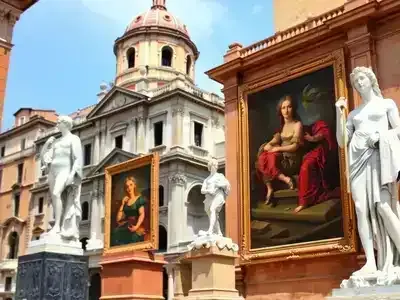
Famous Artists And Their Contributions
When you think of Italian art, where does your mind go? Probably straight to the big names, right? We’re talking Michelangelo, Leonardo da Vinci, Raphael – the whole crew.
But it’s not just about knowing the names; it’s about understanding what they did and why it mattered.
Michelangelo’s sculptures, like David, weren’t just pretty statues; they were statements about human potential and the revival of classical ideals.
Da Vinci wasn’t just painting pretty pictures; he was experimenting with science, anatomy, and perspective in ways that no one had before.
It’s easy to take these things for granted now, but back then, it was revolutionary.
The Renaissance was a period of artistic and intellectual advancements, and these guys were leading the charge.
The Evolution Of Italian Architecture
Italian architecture is like a timeline etched in stone (literally!).
You’ve got the ancient Roman stuff – think Colosseum, Pantheon – massive, imposing structures designed to show off power.
Then you move into the medieval period with its Romanesque and Gothic churches, each region adding its own flair.
And then BAM! The Renaissance hits, and suddenly it’s all about symmetry, proportion, and classical details.
Palaces become grander, churches become more ornate, and the whole country starts to look like a work of art.
Don’t even get me started on the Baroque period – it’s like the Renaissance on steroids, with curves, gilding, and drama everywhere you look.
It’s a wild ride through different styles and influences, and it’s all there for you to see.
Preservation Of Historical Artifacts
Okay, so Italy has all this amazing art and architecture, but what’s being done to keep it from crumbling into dust? That’s where preservation comes in.
It’s a constant battle against time, weather, and, let’s be honest, tourists.
Think about it: these buildings are hundreds, sometimes thousands, of years old.
They’ve survived wars, earthquakes, and countless generations of people traipsing through them.
So, what’s the secret to keeping them around? Well, it’s a combination of things: careful restoration, strict regulations, and a whole lot of money.
They use special techniques to clean and repair the stone, reinforce the structures, and protect them from further damage.
It’s a never-ending job, but it’s essential for preserving Italy’s historical artifacts for future generations.
Preservation efforts are not just about fixing old buildings; they’re about understanding the past and ensuring that these cultural treasures continue to inspire and educate us. It’s a responsibility that Italy takes seriously, and it’s something that we all benefit from.
Here are some key aspects of preservation efforts:
- Regular inspections and maintenance
- Use of traditional materials and techniques
- Collaboration between experts and local communities
Italian Literature Through The Ages
Influential Writers And Poets
Italian literature is a wild ride, spanning centuries and packed with amazing voices.
Think about Dante Alighieri, whose Divine Comedy is still a big deal.
It’s not just a book; it’s a cornerstone of Italian identity.
Then there’s Petrarch, whose sonnets shaped love poetry for ages.
And Boccaccio, with his Decameron, offering a glimpse into life during the plague.
These guys weren’t just writers; they were shaping the language and culture as they went.
You can find Italian literature in English to explore these authors.
The Impact Of Literature On Culture
Literature doesn’t just reflect culture; it actively shapes it. In Italy, this is especially true.
Think about how Manzoni’s The Betrothed helped to create a sense of national unity during the 19th century.
It wasn’t just a novel; it was a cultural touchstone. Literature has been a way to explore social issues, challenge norms, and create a shared identity.
It’s a conversation that’s been going on for centuries, and it’s still relevant today.
Modern Italian Literature Trends
Modern Italian literature is super diverse.
You’ve got authors exploring everything from social realism to psychological dramas.
Elena Ferrante’s Neapolitan Novels have become a global phenomenon, and Umberto Eco’s intellectual thrillers are always thought-provoking.
It’s a scene that’s constantly evolving, reflecting the changing face of Italy and the world.
Modern Italian literature is a vibrant mix of voices and styles, reflecting the complexities of contemporary society. It continues to engage with themes of identity, politics, and social change, offering fresh perspectives on the human experience.
Here are some trends:
- Exploration of identity and belonging
- Focus on social and political issues
- Experimentation with narrative forms
Cinema And Its Cultural Impact
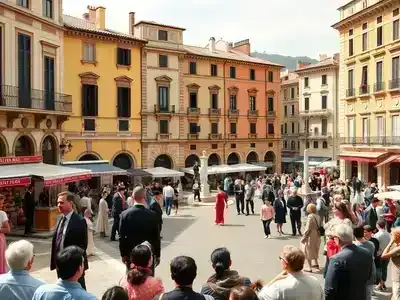
Italian cinema has had a huge impact on the world.
It’s not just about entertainment; it’s a reflection of Italian society, history, and culture.
From groundbreaking movements to modern masterpieces, Italian films have shaped how we see the world.
The Birth Of Italian Neorealism
Neorealism emerged after World War II.
It was a reaction to the artificiality of pre-war cinema.
Directors wanted to show the real lives of ordinary people, often using non-professional actors and filming on location. Neorealism wasn’t just a style; it was a statement about the human condition.
It influenced filmmakers around the globe.
Contemporary Italian Filmmakers
Today, Italian cinema is still going strong.
New directors are exploring different themes and styles.
They’re tackling social issues, telling personal stories, and pushing the boundaries of filmmaking.
Some are internationally acclaimed, winning awards and recognition at major film festivals.
Others are working independently, creating unique and innovative films.
Film Festivals And Their Importance
Film festivals are a big deal in Italy.
They’re not just about premieres and red carpets.
They’re a place for filmmakers to connect, share ideas, and showcase their work.
Festivals like the Venice Film Festival are among the most prestigious in the world.
They help to promote Italian cinema and bring it to a wider audience.
Film festivals are important for several reasons. They provide a platform for emerging filmmakers, they help to preserve film heritage, and they contribute to the cultural landscape of Italy.
Here are some reasons why film festivals are important:
- They support independent filmmaking.
- They promote cultural exchange.
- They boost local economies.
Fashion As A Cultural Expression
Fashion in Italy? It’s way more than just clothes.
It’s like, a whole language.
It tells stories about who people are, where they come from, and what they value.
Think about it: what you wear says a lot without you even opening your mouth.
It’s history, art, and identity all rolled into one fabulous package.
The Rise Of Italian Fashion Houses
Okay, so how did Italy become, you know, the place for fashion? It wasn’t overnight.
After World War II, Italy needed a boost, and fashion was part of that.
Designers started popping up, using local materials and craftsmanship.
These designers weren’t just making clothes; they were building brands. It’s pretty amazing how names like Gucci, Prada, and Versace became household names around the world.
They took Italian style global.
Fashion Weeks And Global Influence
Fashion Week in Milan? It’s a huge deal.
It’s where designers show off their new collections, and everyone who’s anyone in the fashion world shows up.
It sets the trends for the upcoming seasons.
But it’s not just about the clothes on the runway.
It’s about the whole vibe, the parties, the people, and the buzz.
Milan Fashion Week is a major player in shaping global fashion trends.
Cultural Significance Of Traditional Attire
Don’t forget about the traditional stuff! Italy’s got a rich history, and that shows up in its clothing.
Think about the different regions and their unique styles.
Each region has its own special fabrics, colors, and designs.
These aren’t just costumes; they’re a way of keeping traditions alive.
They’re worn during festivals and celebrations, connecting people to their heritage.
It’s a reminder that fashion isn’t just about what’s new; it’s also about honoring the past.
Fashion in Italy is a reflection of its history, art, and regional diversity. It’s a way for Italians to express themselves and their culture to the world.
Here’s a quick look at some regional differences:
- Venice: Known for its elaborate masks and costumes, especially during Carnival.
- Sardinia: Features intricate embroidery and traditional jewelry.
- Sicily: Showcases vibrant colors and bold patterns, often inspired by the island’s history and landscape.
Music And Its Evolution In Italy
Classical Music And Composers
When you think of Italian music, classical probably comes to mind first.
It’s hard not to! Italy has been a major hub for classical music for centuries.
Think about composers like Vivaldi, known for “The Four Seasons,” or Verdi, who composed operas like “Aida” and “Rigoletto.” These composers didn’t just write music; they shaped the entire landscape of classical music. Their works are still performed and celebrated worldwide, and their influence can be heard in countless other pieces of music.
The Birth Of Opera In Italy
Opera? Yeah, that’s Italian too.
It started in Florence around the late 16th century.
The goal was to recreate ancient Greek drama, but what they ended up with was something totally new and exciting.
Early operas were performed for the elite, but it didn’t take long for opera houses to pop up all over Italy, making it accessible to a wider audience.
Composers like Monteverdi helped to solidify opera as a major art form.
It’s pretty wild to think that this dramatic, musical storytelling tradition started right here.
Modern Music Trends And Genres
Italian music isn’t just about the old stuff, though.
There’s a ton of cool stuff happening now! From pop to rock to electronic music, Italian artists are making waves both at home and internationally.
Think about artists like Måneskin, who won Eurovision and have become a global sensation.
They’re proof that Italian music is still evolving and staying relevant.
You’ll find a vibrant music scene in cities like Milan and Rome, with live music venues and festivals showcasing new talent.
It’s a mix of tradition and innovation, and it’s super exciting to see where it’s going.
Italian music has a rich history, but it’s also constantly changing. From classical masterpieces to modern pop hits, there’s something for everyone to enjoy.
The country’s musical heritage is a source of pride and continues to inspire artists around the world.
Here are some modern Italian music trends:
- Italian Pop
- Italian Rock
- Italian Electronic Music
Culinary Traditions And Regional Flavors
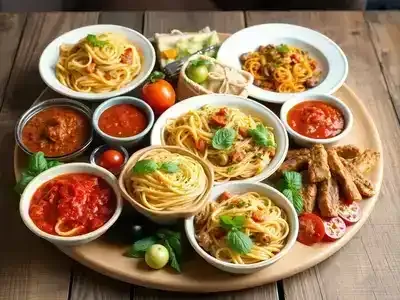
The Origins Of Italian Cuisine
Italian food? It’s way more than just pizza and pasta.
Think about it – it’s a story told through food, passed down through generations.
The roots go way back, mixing influences from ancient Rome, the Middle Ages, and even the New World after 1492.
Each era added something new, creating the base for what we eat today.
It’s not just about recipes; it’s about history on a plate.
You can almost taste the centuries in every bite.
Regional Specialties And Ingredients
Okay, so Italy is basically a food paradise, but here’s the thing: it’s not one big, uniform food scene.
Each region has its own vibe, its own ingredients, and its own dishes that you absolutely have to try.
Think about it: you’ve got the creamy risotto from the north, the spicy pasta dishes pasta dishes down south, and the seafood feasts along the coasts.
It’s all about what’s local.
- Tuscany: Known for its olive oil and hearty bean soups.
- Sicily: Famous for its citrus fruits and seafood.
- Emilia-Romagna: The home of Parmesan cheese and balsamic vinegar.
The Global Influence Of Italian Food
Italian food has taken over the world, right? You can find a pizza joint or a pasta place pretty much anywhere.
But it’s not just about the food itself; it’s about the whole experience.
Think about the way Italians eat – it’s social, it’s relaxed, and it’s all about enjoying good company and good food.
That’s the part that’s really spread around the globe. It’s more than just eating; it’s a way of life.
Italian food’s global success isn’t just about taste; it’s about the culture it brings with it. It’s about family, friends, and enjoying the simple things in life. That’s why it resonates with so many people around the world.
Wrapping It Up
So, there you have it.
Italy is a place where history and culture are just everywhere you look.
From ancient ruins to stunning art, every corner tells a story.
You can feel the weight of the past in the streets of Rome or the beauty of the Renaissance in Florence.
And let’s not forget the food—each region has its own flavors that reflect its history.
Whether you’re wandering through a museum or enjoying a meal, you’re part of something bigger.
Italy isn’t just a destination; it’s an experience that sticks with you long after you leave.
So, if you ever get the chance, go explore.
You won’t regret it.
Frequently Asked Questions
What were the main achievements of the Roman Empire?
The Roman Empire was known for its impressive buildings, roads, and laws.
They created a strong government and spread their culture across Europe and parts of Africa and Asia.
How did the Etruscans influence Italian culture?
The Etruscans were an ancient group in Italy who influenced art, religion, and city planning.
They helped shape early Roman culture and traditions.
What role did Florence play during the Renaissance?
Florence was a key city during the Renaissance, known for its art and learning.
Many famous artists and thinkers lived and worked there, making it a cultural center.
Who were some important figures in the unification of Italy?
Key figures included Giuseppe Garibaldi and Count Camillo di Cavour.
They worked hard to bring different regions of Italy together into one nation.
What are some unique Italian dialects?
Italy has many dialects, like Sicilian and Neapolitan, that are different from standard Italian.
These dialects show the rich diversity of the country.
How has the Catholic Church shaped Italian society?
The Catholic Church has played a big role in Italian life, influencing art, holidays, and even politics.
Many famous artworks were created for churches.
What are some famous Italian foods?
Italian cuisine includes pizza, pasta, and gelato.
Each region has its own special dishes and ingredients that reflect local traditions.
What is the significance of Italian fashion?
Italian fashion is known worldwide for its style and quality.
Cities like Milan host fashion weeks that showcase new designs and trends.